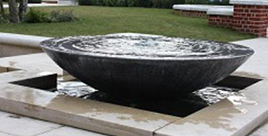CATALOGUE
Wisteria x formosa "Issai"

These hardy, deciduous twining climbers are traditionally grown on walls, trellis, pergolas or even trees and they also make very distinctive standards. Fragrant flowers appear in May and June often before the foliage is fully developed. Colours range from white, through white-tinted lilac, rose-tinted purple, violet-blue to bluish-purple but some will not be available in all of the forms listed below. They will grow in any deep, fertile soil - ideally a rich loam. Shelter from cold winds and avoid placing them where early morning sun will strike them after frost. It is best that they are given the protection of a south or west-facing wall. All wisterias bear mid-green pinnate leaves which usually turn yellow before falling in the autumn. W.chinensis syn.W.sinensis (Chinese wisteria) is vigorous, twines anti-clockwise and sometimes produces a second crop of shorter flower clusters in late summer. W.floribunda (Japanese wisteria) twines clock-wise and produces a single crop of flower clusters a week or two later than W.chinensis.

